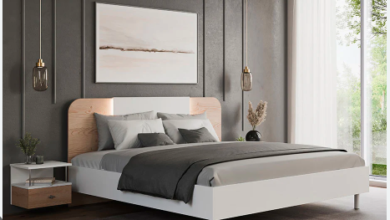A Holistic Approach: Integrating Acoustic Screens Into HVAC Design

There are more than just controlling the temperature and keeping the air clean to think about when it comes to HVAC (Heating, Ventilation, and Air Conditioning) systems. One often overlooked aspect is the impact of noise generated by HVAC equipment. Excessive noise can not only disrupt the comfort of occupants but also have negative consequences on health and productivity. To address this issue, a holistic approach to HVAC design involves integrating acoustic screens strategically. Incorporating acoustic screens into HVAC system design can significantly reduce noise, which is an important topic that this article delves into.
Air Conditioning System Noise Reduction:
Noise generated by HVAC equipment can originate from various sources, including air handlers, compressors, fans, and ductwork. This noise can propagate through buildings, causing discomfort and distraction to occupants. In commercial settings, excessive noise levels can hinder communication, impair concentration, and reduce productivity. In residential environments, noisy HVAC systems can disrupt sleep and overall well-being. Moreover, prolonged exposure to high noise levels can lead to stress, fatigue, and even hearing loss.
Holistic Approach To HVAC Design:
A holistic approach to HVAC design considers not only thermal comfort and indoor air quality but also factors such as energy efficiency and acoustics. Integrating acoustic screens into HVAC design is a proactive measure to mitigate noise at its source, rather than relying solely on passive sound insulation measures. By addressing noise at the equipment level, acoustic screens offer a more effective and sustainable solution for noise control in HVAC systems.
Benefits Of Integrating Acoustic Screens:
In the holistic approach to HVAC design, considerations extend to the integration of various noise-reduction measures, including the strategic placement of acoustic screens and the utilization of innovative solutions such as rafter-mounted HVAC platforms.
Noise Reduction:
Acoustic screens act as barriers that absorb, reflect, or block sound waves generated by HVAC equipment. By minimizing noise emissions, they create quieter indoor environments conducive to productivity, concentration, and relaxation.
Improved Occupant Comfort:
Reduced noise levels contribute to enhanced occupant comfort and satisfaction. Whether in commercial offices, residential buildings, or healthcare facilities, a quieter environment promotes a sense of well-being and fosters positive experiences for occupants.
Regulatory Compliance:
Many jurisdictions have noise ordinances and regulations in place to limit permissible noise levels in various settings. Integrating acoustic screens into HVAC design helps ensure compliance with these regulations, avoiding potential fines and penalties.
Energy Efficiency:
Acoustic screens can also have secondary benefits for energy efficiency. They improve HVAC system design as a whole, which in turn reduces operational costs and energy consumption by decreasing the requirement for supplementary sound insulation materials and treatments.
Design Flexibility:
You can customise acoustic screens to fit your individual HVAC needs and architectural style because they come in a wide r nge of shapes, sizes, and materials. Whether retrofitting existing systems or designing new installations, their versatility enables seamless integration into diverse environments.
Conclusion:
In conclusion, a holistic approach to HVAC design involves considering acoustics as an integral component of system performance. By integrating acoustic screens strategically, designers and engineers can effectively mitigate noise emissions from HVAC equipment, enhancing occupant comfort, improving energy efficiency, and ensuring regulatory compliance. As the demand for quiet and sustainable indoor environments continues to grow, the role of acoustic screens in HVAC design becomes increasingly essential. Embracing this holistic approach promises not only quieter spaces but also healthier, more productive, and more enjoyable built environments for all.





